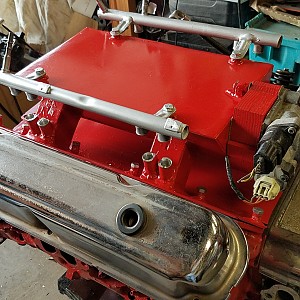General Description
This was a proof of concept MPEFI intake I fabbed up for a turbocharger I am planning to install. The runners are not the best match for the ports but are very close to what I needed. The next one I will build will have thinner walled rectangle tube runners or more likely 1.75 inch EMT runners that are formed to the port shape at the flange. The flanges were cut with a combination of plasma, jig and bandsaw, depending on when I cut them. I started with a plasma but the cuts were nasty and...
You do not have permission to view the full content of this item.
Log in or register now.

